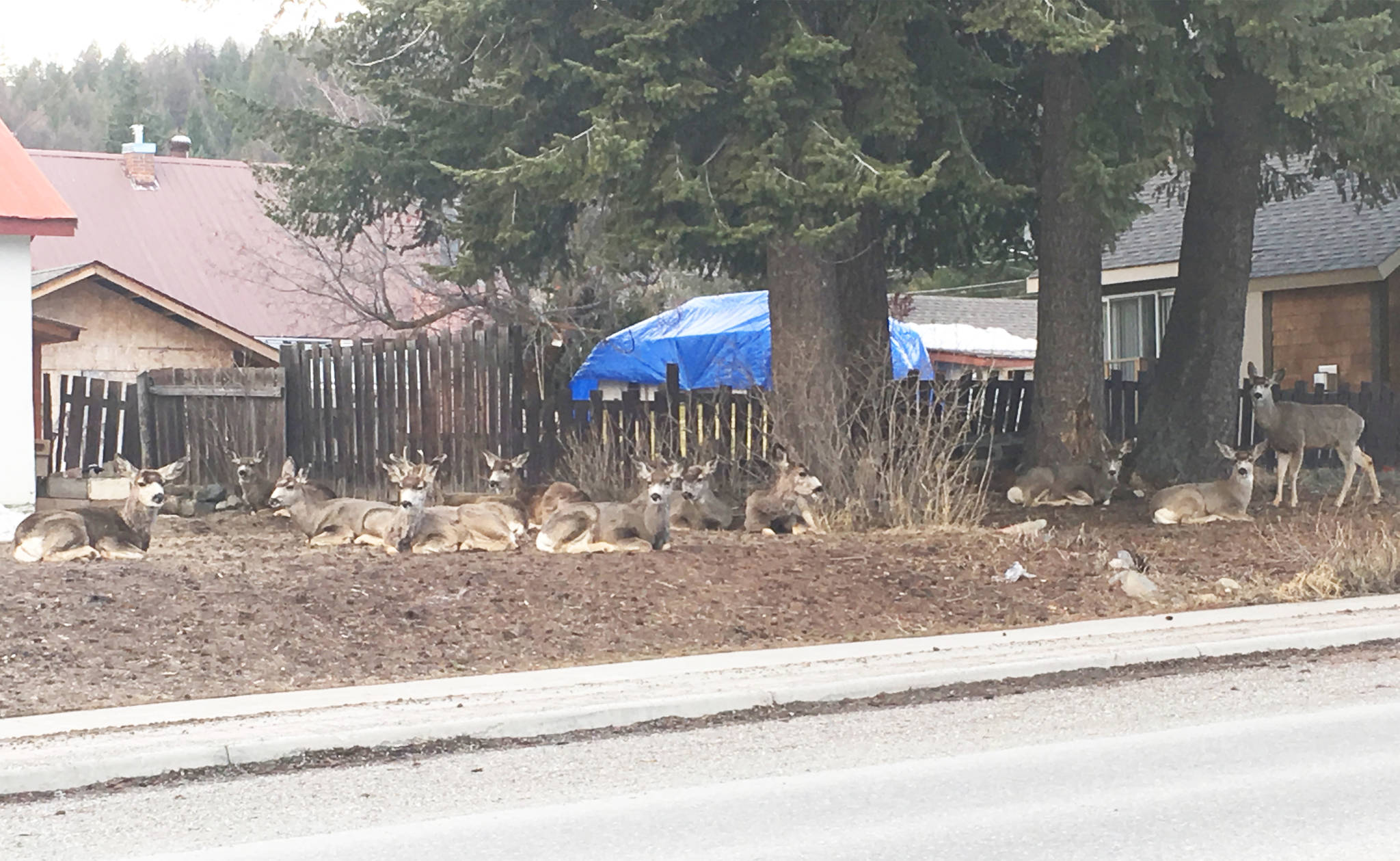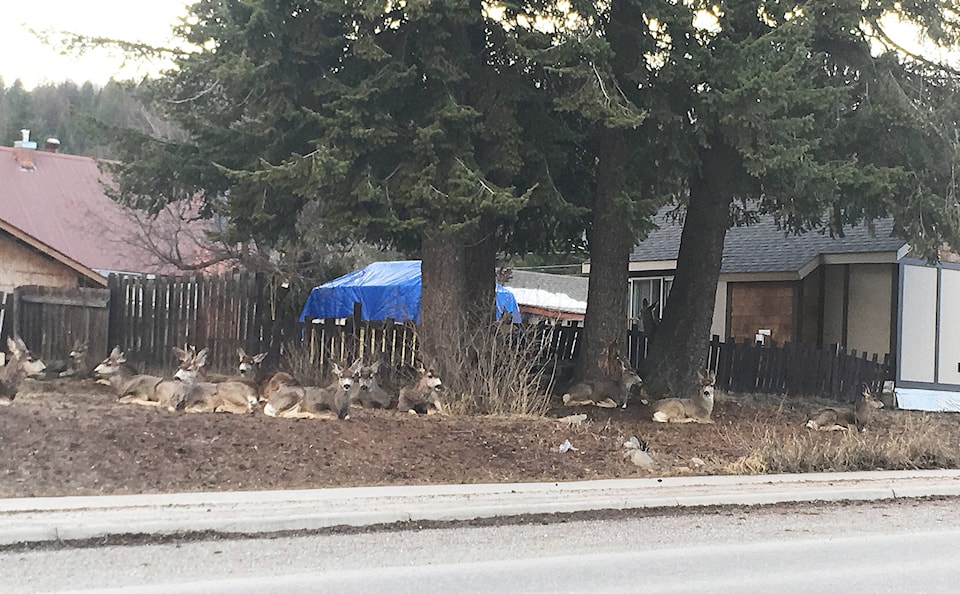The Kimberley Urban Deer Advisory Committee (UDAC) held a meeting on Friday, April 20, 2018 to discuss the recent mule deer translocation along with plans for the future.
Wildlife Biologist Ian Adams was at the meeting to give a report on how the recent translocation went, where the deer are now, and how to move forward with future translocation initiatives.
At the beginning of March, Adams and a team of Wildlife Biologists, Veterinarians and Staff from Vast Resources made their way through Kimberley neighbourhoods to relocate mule deer to a remote location north of the Kootenay River and Canal Flats.
The team was able to move 50 deer in five days, which Adams says was very efficient. The total is broken down into age categories: 23 fawns (11 male, 12 female), 8 young adults (one male and seven female), 14 female adults (does) and five aged does.
With regards to the 2017’s numbers, Adams says there was a wide range of movement and that there is a definite trend of the deer moving downhill.
Six deer never left their release site, while 25 of them moved to several locations including Cranbrook, Kimberley, Fairmont, Wasa, and Canal Flats. One deer even headed east into the height of the Rockies, explained Adams. 2017 also saw seven mortalities of translocated deer, six of which were predatory, one due to injury.
This year, there were three separate release sites and Adams explained that they are limited to the winter range due to the time of year, however the deer are taken to the most appropriate habitat possible.
He says that overall, the translocation was successful and there were no injuries to the deer during the process.
24 of the 50 deer were collared with a GPS tracking device, while the rest received ear tags. The team has been tracking the movement of the deer since they were released, and so far seven deer have ended up in the community of Canal Flats.
“Most movement occurs in the month before they have their fawns. This year, the ones that moved out of two of the release sites is probably a response to the deep snow. We’re not sure,” said Adams. “Overall, from 2016 through to now, about 25 to 30 per cent are moving to other communities and survival is about 50 per cent. It’s not great, but it’s higher than a cull. The big question remains, how do you keep them out of towns? I’m not sure you can. Is it just a matter of what we’re doing now, moving them, and accepting that level of mortality; having to go back in and take them out of places like Canal Flats and Wasa.”
Part of the reason that the BC Government will not consider an operational translocation permit is because they do not want habituated deer to end up in other communities, explained Adams. The seven deer that are now in Canal Flats may be euthanized as per the translocation contract.
City Councillor and Deer Committee Member Darryl Oakley says he wonders about the deer that don’t end up in other communities; whether they were being fed in Kimberley or not, and what their life or diet was like before they were relocated.
Adams explained that six of the seven deer that are now in Canal Flats were found feeding on corn and other substances foreign to deer in Chapman Camp during the translocation. He added that if the deer that end up in other communities are doing so because they are habituated to being fed, the issue stems back to feeding the deer.
“The seven deer that are currently in Canal Flats, six of them came from upper Chapman Camp where they were accessing corn. When you’re talking about additional support for the City to clamp down on feeding enforcement, this is another public awareness issue of why we don’t feed them,” explained Adams. “The City has adopted translocation as their method of dealing with urban deer, and fed deer are more likely to move to other communities. That’s not fair to those communities and it’s an added tax burden on the City of Kimberley, because they are being required to go and deal with those deer. Those deer will have to be removed at some point in the next few months.”
The City has until May 10 to remove the deer from Canal Flats in order to allow for the fawning period. If the City cannot meet the deadline, they will have to wait until the fall to deal with those deer.
The UDAC has advised Kimberley City Council to approve the removal of those deer before the May 10 deadline. However, City CAO Scott Sommerville says that a discussion with Canal Flats will have to take place and a separate permit is required.
The UDAC will also meet again in May to discuss making changes to their Managing for the Future document, and the possibility of a Buck translocation.

